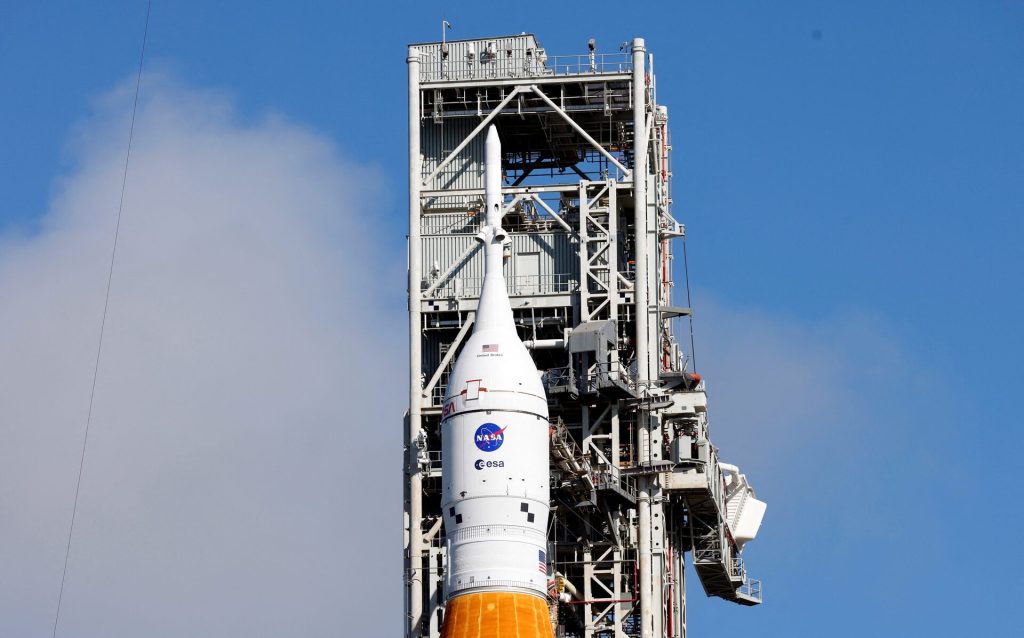Introduction: Overview of NASA’s Artemis Mission and Its Goals
NASA’s Artemis program represents a bold and ambitious step toward expanding human presence beyond Earth. Named after the Greek goddess of the Moon, Artemis aims to return astronauts to the lunar surface by 2024, making history as the first crewed mission to the Moon in over half a century. However, Artemis is not just a return to the Moon—it’s the stepping stone to Mars and beyond. As part of NASA’s broader goal to establish sustainable exploration and human settlement in space, Artemis will also set the stage for the next giant leap: human missions to Mars.
The Artemis program is designed to focus on long-term lunar exploration, technological innovation, and international collaboration. Its primary objectives include landing “the first woman and the next man” on the Moon, establishing a sustainable presence on the lunar surface, and testing technologies for deeper space exploration. But the true ambition of Artemis lies in its role as a springboard for Mars exploration. By testing new spacecraft, habitats, and systems on the Moon, NASA aims to solve the challenges of human space travel to Mars, which is farther, harsher, and more challenging than any prior mission.
In this article, we will explore the goals of the Artemis program, review the success of Artemis I, discuss the upcoming crewed lunar missions, look at how Artemis is laying the groundwork for Mars exploration, examine the new technologies being developed for the mission, and consider the long-term impact Artemis will have on the future of space exploration.
Artemis I Mission Success: Key Achievements in the First Uncrewed Mission
The Artemis I mission, launched in late 2022, marked a crucial milestone in NASA’s goal to return humans to the Moon and beyond. As an uncrewed mission, Artemis I was primarily designed to test the foundational components of the Artemis program, including the Space Launch System (SLS) rocket, the Orion crew vehicle, and the overall mission architecture. The success of Artemis I set the stage for future crewed missions and validated many of the systems needed for lunar exploration.
The primary goal of Artemis I was to demonstrate that the SLS rocket and the Orion spacecraft could operate safely together in deep space, with the ultimate aim of sending astronauts on lunar missions. The launch of the SLS rocket from Kennedy Space Center in Florida was a significant achievement, as it was the most powerful rocket NASA had ever built, surpassing even the Saturn V rockets used in the Apollo missions. Orion’s uncrewed flight around the Moon and its return to Earth were also pivotal tests for NASA’s deep-space capabilities.
Artemis I also demonstrated the spacecraft’s ability to navigate through deep space, providing vital data on propulsion systems, navigation, and re-entry conditions. One of the most exciting aspects of Artemis I was its successful flyby of the Moon, which offered the first close-up images of the lunar surface from Orion. This mission confirmed that NASA’s technology, systems, and infrastructure are ready to support human exploration of the Moon and beyond, proving that the Artemis program is on track to achieve its next goals.
While Artemis I was uncrewed, its achievements laid the groundwork for the crewed missions that will follow, demonstrating the feasibility of human missions to the Moon and Mars in the coming years.
Human Lunar Landings: Planned Crewed Missions to the Moon under Artemis
NASA’s Artemis program is set to achieve the long-awaited goal of returning astronauts to the Moon. While the Apollo missions of the 1960s and 1970s made history by landing the first humans on the lunar surface, Artemis will build on that legacy with more ambitious goals, including landing astronauts at the Moon’s South Pole—an area not yet explored by humans.
The first crewed mission under Artemis, Artemis II, is expected to launch by 2024. This mission will carry astronauts aboard the Orion spacecraft, testing the spacecraft’s ability to support crew members on long-duration spaceflights and ensuring its safety during lunar flybys. The crew will orbit the Moon, conducting science experiments and testing mission systems in preparation for future landings.
The following mission, Artemis III, will be the first crewed lunar landing in over 50 years. NASA has partnered with SpaceX for the development of a new Lunar Gateway and a lunar landing system that will bring astronauts to the surface. This new lander, built using technology from SpaceX’s Starship, will carry astronauts from lunar orbit to the surface of the Moon. One of the key goals of Artemis III will be to land astronauts at the lunar South Pole, a region rich in water ice that could potentially support future human habitats and fuel production.
These early Artemis missions will not only establish the feasibility of sustained human exploration on the Moon but will also test technologies and techniques needed to support future Mars missions. NASA plans to send astronauts to the lunar surface for extended stays, paving the way for the establishment of a permanent base. These missions will focus on conducting scientific experiments, studying lunar resources, and testing new technologies for off-planet living and exploration.

Mars Exploration on the Horizon: How Artemis Paves the Way for Human Missions to Mars
NASA’s ultimate goal with Artemis is to make human exploration of Mars possible, and the program is structured to lay the necessary groundwork for this ambitious endeavor. The technological advancements, operational experiences, and scientific findings from Artemis missions will directly inform future Mars missions, expected to take place later in the 2030s.
One of the primary reasons for sending humans back to the Moon under Artemis is to test and refine the technologies needed for deep-space travel, including Mars missions. For example, the infrastructure required to support human life on the Moon—such as life support systems, habitats, and communication networks—will also be necessary for a Mars mission. Additionally, NASA’s plans for a sustainable lunar base will serve as a testing ground for techniques like in-situ resource utilization (ISRU), which involves extracting resources from the Moon (or Mars) for fuel, water, and building materials.
Mars, being farther from Earth than the Moon, presents its own set of unique challenges. Astronauts will be exposed to more extreme space environments, including higher radiation levels and prolonged isolation. Artemis missions will provide essential data on how astronauts respond to deep-space environments, how long-duration spaceflights impact the human body, and how we can develop solutions for food, water, and shelter during long missions.
NASA’s Lunar Gateway, part of the Artemis program, is also a key enabler for Mars exploration. This space station, orbiting the Moon, will serve as a staging point for missions to the lunar surface and as a refueling station for deep-space exploration. By testing these systems and techniques in lunar orbit, NASA will be able to work out the complexities of interplanetary travel before sending humans to Mars.
Technological Innovations: New Space Technologies Developed for Artemis Missions
The Artemis program has spurred the development of numerous cutting-edge technologies that will not only advance lunar exploration but also serve as foundational tools for Mars missions and beyond. Some of the most notable innovations include advancements in space transportation, habitats, and life support systems.
The Space Launch System (SLS) is one of the most powerful rockets ever built, designed to carry astronauts and cargo on missions beyond low Earth orbit. With its heavy-lift capabilities, SLS will play a pivotal role in sending astronauts to the Moon and Mars, offering the necessary power to break free of Earth’s gravity and travel to deep space.
Another groundbreaking technology developed for Artemis is the Orion spacecraft. Equipped with advanced avionics, navigation, and life support systems, Orion will transport astronauts to the Moon and provide shelter and protection during long-duration spaceflights. Orion is designed to operate in the harsh environment of deep space and will be critical for both lunar and Mars missions.
On the Moon, NASA is also developing new lunar landers, rovers, and habitats. The Lunar Gateway, a space station in orbit around the Moon, will serve as a hub for astronauts traveling to and from the lunar surface. These advancements in space architecture and logistics will be key to enabling sustainable exploration on the Moon and eventually Mars.
In-situ resource utilization (ISRU) is another crucial innovation. Artemis missions will explore the potential for extracting water from lunar ice, which could be converted into oxygen and hydrogen to support astronauts’ survival and fuel rockets for return trips. These technologies could one day allow humans to live and work on Mars, where similar resources are likely to be used to support long-term missions.
Conclusion: The Lasting Impact of Artemis on the Future of Space Exploration
NASA’s Artemis program is much more than a return to the Moon—it is the cornerstone of a new era in space exploration. By pushing the boundaries of human exploration and pioneering new technologies, Artemis will not only open the door to sustainable lunar missions but also lay the foundation for the bold ambition of sending humans to Mars. As the program moves forward with crewed lunar landings and prepares for the challenges of Mars exploration, Artemis will be a key catalyst in humanity’s journey to become an interplanetary species.
The Artemis missions will have a lasting impact on both space exploration and technological innovation, inspiring generations of scientists, engineers, and explorers to continue pushing the limits of what is possible. With its focus on sustainability, collaboration, and scientific discovery, Artemis is set to redefine our relationship with space and open up new possibilities for the future of human civilization beyond Earth.


















































Discussion about this post